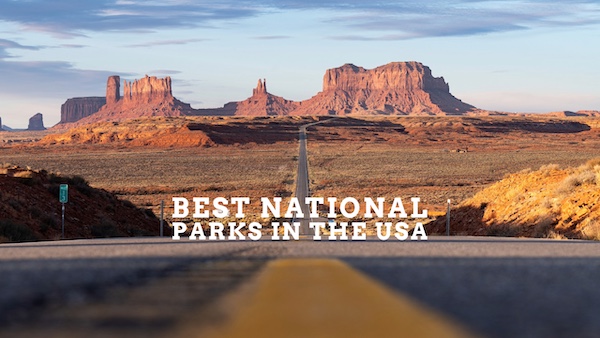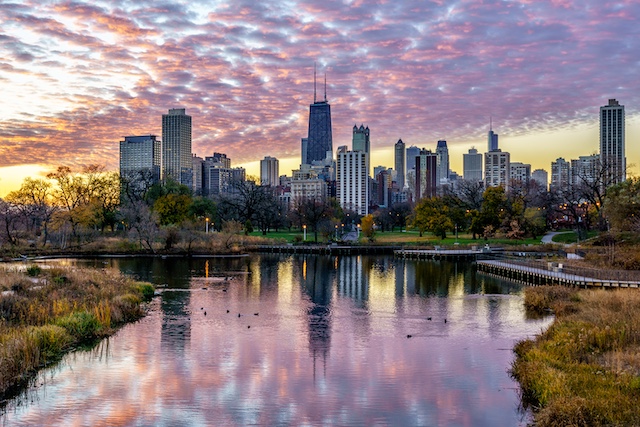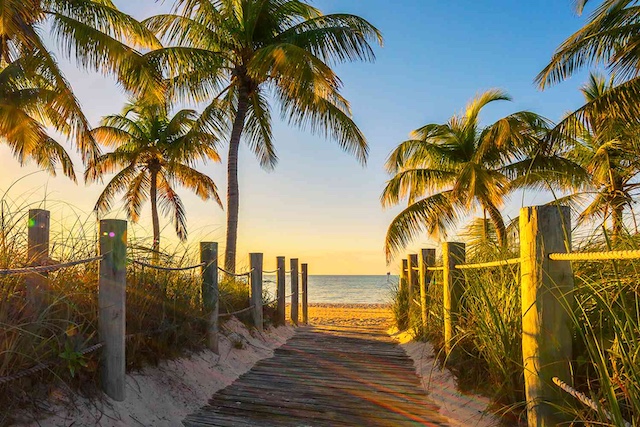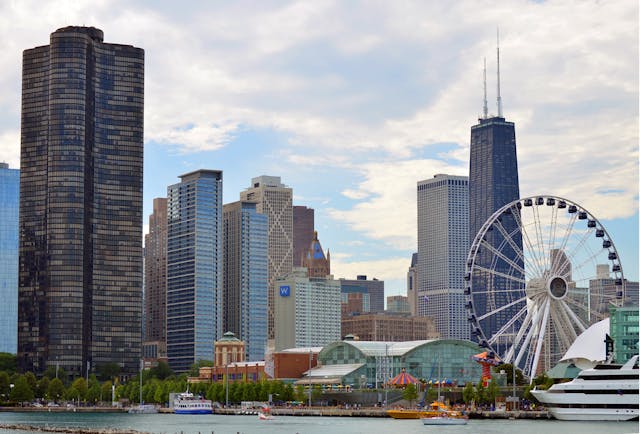The Best National Parks in the United States
This is our comprehensive, in-depth guide to the best national parks in the United States. Get the top highlights, key features, tips, and recommendations to help you plan your next adventure into America’s natural treasures.
Introduction
The United States boasts one of the world’s most extensive and diverse national park systems, stretching from the lush forests of the Pacific Northwest to the tropical wetlands of Florida and from the soaring mountain peaks of the Rockies to the arid deserts of the Southwest.
Managed by the National Park Service, these protected lands encompass breathtaking landscapes and precious ecological habitats.
For many, national parks are not just tourist destinations—they represent an enduring commitment to preserve nature’s majesty for future generations.
This post will highlight 12 of the best national parks in America, each renowned for its unique geological features, abundant wildlife, and stunning vistas.
Whether you are seeking the adrenaline rush of scaling rugged mountain trails, the serene atmosphere of paddling through pristine waterways, or the wonder of witnessing geysers erupt in real-time, there is a park here for you.
Some of these parks are among the most visited places in the country, while others are more off-the-beaten-path and offer plenty of solitude if you prefer a quieter experience.
Exploring these great parks will allow you to discover a slice of what makes the United States so ecologically and culturally rich.
Each park encapsulates a different facet of America’s natural heritage—towering red rock formations, glacier-carved valleys, subtropical wetlands, ancient forests, and more.
We will delve into each park’s highlights, along with practical recommendations on what to see, where to hike, when to visit, and how to make the most of your stay.
Whether planning a cross-country road trip or simply dreaming of future excursions, this guide aims to inspire you to get out there and explore.
Let’s embark on a journey through some of the nation’s most spectacular landscapes without further ado.
1. Yellowstone National Park
Established in 1872, Yellowstone National Park is the world’s first national park. It spans Wyoming, Montana, and Idaho and is famed for its geothermal wonders, especially the Old Faithful geyser, which erupts with remarkable regularity.
Beyond geysers, Yellowstone boasts a tapestry of otherworldly hot springs, mud pots, and steaming fumaroles—expressions of a dynamic volcanic system beneath the surface.
One of the best ways to experience Yellowstone is by following the loop roads that traverse the park’s major attractions.
Please stop at the Grand Prismatic Spring, known for its vibrant rainbow ring of microbial mats. Wildlife lovers will be thrilled by the opportunity to see bison, wolves, elk, and grizzly bears, particularly in the Lamar Valley.
A drive or hike through Hayden Valley might reward you with views of massive bison herds roaming across the open grasslands.
Summer is typically the busiest season, so if you prefer fewer crowds, consider visiting in late spring or early fall.
Snowmobiling and cross-country skiing can make for unforgettable winter adventures, although some roads close for the season.
Regardless of which you choose, Yellowstone’s dynamic and often unpredictable landscapes will leave you in awe.
2. Yosemite National Park
Nestled in California’s Sierra Nevada mountains, Yosemite National Park is synonymous with towering granite cliffs, graceful waterfalls, and giant sequoia groves.
Iconic formations such as El Capitan and Half Dome have long drawn rock climbers, photographers, and hikers from around the globe.
Yosemite Valley, carved by glaciers over millennia, is a dramatic corridor lined with meadows, forests, and flowing rivers.
For first-time visitors, the heart of the park—Yosemite Valley—is an ideal starting point. You can stroll along the paved pathways to witness Yosemite Falls (the tallest waterfall in North America) or explore Cook’s Meadow.
More intrepid adventurers may attempt the hike to Half Dome’s summit, a challenging journey requiring a permit and a good head for heights.
Climbers of all skill levels are drawn to El Capitan, especially since documentaries showcasing record-breaking free climbs have been released.
Outside the valley, the Tioga Road leads to high-elevation landscapes, such as Tuolumne Meadows. The open, subalpine terrain contrasts sharply with the more densely populated valley floor. You can also find quieter trails and numerous backcountry camping opportunities.
Spring brings roaring waterfalls from snowmelt, while fall offers crisp weather and fewer crowds. Yosemite’s timeless beauty has inspired naturalists and artists for generations and remains a treasured wilderness destination.
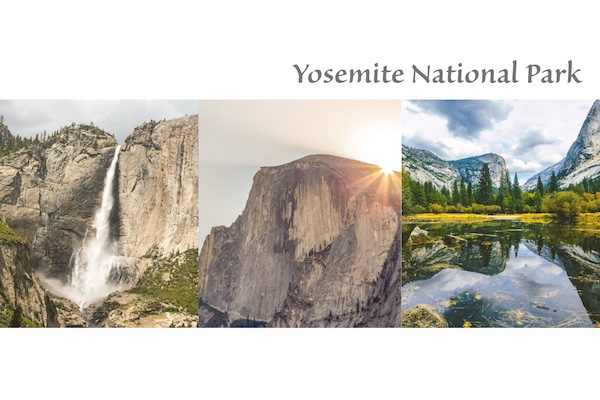
3. Grand Canyon National Park
The Grand Canyon, situated in northern Arizona, is one of the most recognizable landmarks in the United States —a vast chasm carved by the Colorado River over millions of years.
At up to 18 miles wide and over a mile deep, the canyon’s scale is tough to fathom until you stand at the rim and gaze across the layered rock formations.
Most visitors flock to the South Rim, where numerous scenic overlooks are available, including Mather Point and Desert View.
The North Rim, situated at a higher altitude, offers a more remote and tranquil experience, although it is closed during the winter months.
If you’re short on time, a leisurely stroll along the Rim Trail offers breathtaking panoramas without the exertion of descending into the canyon.
For those seeking a more rigorous adventure, the Bright Angel Trail winds into the canyon’s depths, leading to the Colorado River.
Overnight camping permits are required if you intend to spend a night below the rim.
Sunrise and sunset are magical times at the Grand Canyon, transforming the walls into a kaleidoscope of reds, oranges, and purples.
Whether you take a helicopter tour, raft down the Colorado, or hike the rugged trails, the Grand Canyon’s grandeur remains an unforgettable experience.
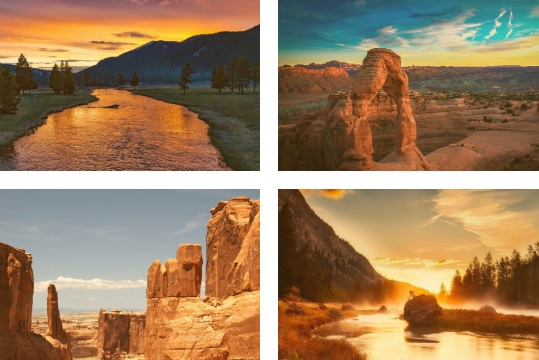
4. Zion National Park
Located in southwest Utah, Zion National Park is renowned for its towering sandstone cliffs and stunning slot canyons, which were formed over millions of years by the erosive actions of the Virgin River.
The park’s main canyon offers lush, green environs set against sheer red walls, making it a photographer’s dream.
Visitors can access many of the most beloved trailheads via a convenient shuttle bus system, which also helps to reduce traffic and preserve the delicate ecosystem.
Among Zion’s signature hikes are the Narrows and Angels Landing. The Narrows takes you through a deep canyon where the river is the trail—prepare to get your feet wet as you wade through flowing water.
Angels Landing, on the other hand, presents a challenging ascent with steep inclines and chains bolted to the rock for added stability. The dramatic summit offers a breathtaking, 360-degree view of the canyon below, but it is not recommended for those with vertigo.
Zion’s relatively compact size and efficient shuttle system allow for easy navigation. Spring and fall are popular times to visit, providing milder temperatures for long hikes.
The park can become quite crowded and hot during the summer, so plan accordingly.
No matter the season, Zion’s blend of red rock canyons, lush vegetation, and diverse wildlife leaves visitors awestruck.
5. Rocky Mountain National Park
Straddling the Continental Divide in northern Colorado, Rocky Mountain National Park offers a high-altitude playground for hikers, wildlife enthusiasts, and scenic drivers alike.
With more than 300 miles of trails winding through alpine tundra, forested valleys, and dramatic peaks that soar above 14,000 feet, there are plenty of ways to experience the grandeur of the Rockies.
One of the most popular attractions is the Trail Ridge Road, which ascends to over 12,000 feet, providing panoramic views of sweeping alpine landscapes dotted with elk and bighorn sheep.
For hikers, options abound—from leisurely lakeside strolls near Bear Lake to strenuous treks up Longs Peak, the park’s tallest mountain at 14,259 feet. Summer wildflowers carpet the meadows, while autumn sees the aspens ablaze in vibrant golds.
Wildlife sightings are common, especially at dusk and dawn. Elk herds are particularly numerous and can be spotted in meadows or crossing roads.
Winters are harsh yet beautiful, offering opportunities for snowshoeing and cross-country skiing.
Please note that road closures are frequent due to inclement weather. Estes Park is a convenient base camp, with lodging and dining options adjacent to the park’s east entrance.
Whether summiting craggy peaks or simply soaking in the vistas, Rocky Mountain National Park delivers quintessential American alpine splendor.
6. Glacier National Park
Glacier National Park in northwestern Montana is a pristine haven of rugged mountains, shimmering lakes, and, of course, active glaciers.
Known as the “Crown of the Continent,” Glacier teems with wildlife—grizzly bears, mountain goats, moose, and lynx roam its forests and valleys.
The park is traversed by the renowned Going-to-the-Sun Road, a 50-mile marvel of engineering that crosses the Continental Divide at Logan Pass, offering jaw-dropping scenery around every bend.
Hikers in Glacier can choose from more than 700 miles of trails, passing through alpine meadows blanketed in wildflowers during the short but vibrant summer.
Popular treks include the Hidden Lake Overlook, frequented by mountain goats, and the Highline Trail, renowned for its dramatic, cliff-hugging path.
The Many Glacier region, located on the park’s east side, is an ideal spot for spotting wildlife, while the west side, near Lake McDonald, boasts deep forests and relatively mild weather.
Due to its northern latitude and mountainous terrain, Glacier National Park experiences a short tourist season, typically from late June to early September.
In the higher elevations, winter snows can linger well into July. To avoid congestion, consider visiting on a midweek or slightly off-peak hour.
Whether you come for the wildlife, the alpine vistas, or the unspoiled lakes, Glacier National Park stands as one of America’s most immaculate natural treasures.
7. Grand Teton National Park
Just south of Yellowstone lies Grand Teton National Park, a striking expanse in northwestern Wyoming defined by the rugged, iconic Teton Range.
The sharp, serrated peaks—some exceeding 13,000 feet—rise abruptly from the Jackson Hole valley, creating a dramatic skyline that draws photographers and mountaineers from around the globe.
Grand Teton is also known for its pristine lakes, vibrant wildflower meadows, and various wildlife, including elk, bison, grizzly bears, and bald eagles.
Visitors can soak in the majesty of the mountains by driving along the Teton Park Road, stopping at overlooks such as Snake River Overlook and Oxbow Bend, famous for its reflections of Mount Moran.
Hiking opportunities cater to all experience levels. Shorter, family-friendly walks, such as the Taggart Lake loop, offer stunning views of the surrounding mountains.
At the same time, more experienced hikers can tackle the Cascade Canyon Trail or attempt a guided climb of the Grand Teton itself.
In late spring, you’ll be treated to carpets of wildflowers beneath still-snowcapped peaks.
The charming town of Jackson, located just to the south, offers a variety of lodging, dining, and cultural attractions, making it a convenient base.
Whether you camp under star-lit skies, paddle on Jenny Lake, or marvel at the imposing Teton Range, this park will leave you in awe.
8. Great Smoky Mountains National Park
Located on the border of Tennessee and North Carolina, Great Smoky Mountains National Park is America’s most visited national park, revered for its lush forests, mist-shrouded ridges, and vibrant biodiversity.
The park encompasses part of the Appalachian range, where generations of cultural history, including old homesteads and grist mills, blend with over 800 miles of scenic trails.
If you want to experience the highlights without extensive hiking, drive along Newfound Gap Road, which traverses the park from north to south.
Popular stops include Clingmans Dome, the park’s highest point, where an observation tower offers sweeping 360-degree views.
Hikers might enjoy the Alum Cave Trail or visit Cades Cove, a broad valley that offers excellent wildlife viewing, with bears, deer, and wild turkeys often spotted in the area.
Springtime in the Smokies brings an array of wildflowers, earning the park global recognition for its floral diversity.
Autumn is equally enchanting, as colorful foliage blankets the hills in vibrant reds, oranges, and yellows.
Summers can be busy and humid, but the shady trails and refreshing waterfalls make for a pleasant escape.
The region is also rich in cultural traditions—nearby towns like Gatlinburg and Pigeon Forge offer a glimpse into Appalachian heritage, visiting the Smokies an enriching experience overall.
9. Acadia National Park
Acadia National Park, situated on the rugged coast of Maine, presents a stunning mosaic of rocky shorelines, evergreen forests, and granite peaks that rise dramatically from the Atlantic.
Spread primarily across Mount Desert Island and several smaller islets, Acadia invites visitors to explore its scenic carriage roads, pristine lakes, and coastal panoramas.
Its relatively compact size—and paved roads that loop through much of the park—make it easily accessible.
One of the park’s main draws is Cadillac Mountain, the highest point along the North Atlantic seaboard.
From its summit, you can capture a glimpse of the sunrise before almost anyone else in the United States, as this peak is among the first places sunlight touches each morning.
For those looking to hike, trails like the Ocean Path offer spectacular shoreline views, while the Jordan Pond Path circles a crystal-clear lake, with viewpoints of the Bubbles—two distinctive, rounded hills.
The charming town of Bar Harbor is a stone’s throw from Acadia’s boundaries, offering lodging, dining, and shopping for travelers.
You can feast on local lobster, whale-watch in the harbor, or take a relaxing boat cruise around the park’s rocky islands.
From quiet coves to scenic mountain lookouts, Acadia provides a quintessential New England coastal experience.
10. Bryce Canyon National Park
Although its name suggests a single canyon, Bryce Canyon National Park in southern Utah is a series of natural amphitheaters lined with bright red, orange, and white hoodoos—thin spires of rock that have stood for eons due to erosion.
The unique rock formations in Bryce Canyon offer some of the most otherworldly vistas in the American Southwest.
Standing at one of the overlooks—such as Sunrise Point or Bryce Point—at dawn can feel like stepping onto an alien world as the rising sun ignites the color-splashed hoodoos.
When exploring Bryce, don’t limit yourself to the overlooks alone; hiking into the canyon reveals a labyrinth of spires and arches that tower above you.
The Queen’s Garden and Navajo Loop combination is a popular trail, offering relatively easy access to iconic rock formations, such as Thor’s Hammer.
Despite the high-desert climate, you might encounter snow if you visit in late fall or early spring, providing a stark, photogenic contrast to the red rock.
Nighttime in Bryce Canyon is just as spectacular—its remote location and lack of light pollution make it a designated Dark Sky Park, ideal for stargazing.
Whether you’re intrigued by geology or photography or want to stand in awe of natural sculptures, Bryce Canyon is an unmissable Utah gem.
11. Everglades National Park
In the subtropical climate of southern Florida lies Everglades National Park, the largest tropical wilderness in the United States.
Often referred to as the “River of Grass,” the Everglades is essentially a slow-moving river that meanders through marshes, swamps, and mangroves, supporting a dazzling array of wildlife.
American alligators, crocodiles, manatees, and roseate spoonbills are just a few of the species calling this vast wetland home.
Visiting the Everglades can take many forms: boardwalk trails, guided boat tours, canoe or kayak excursions, and even ranger-led programs that let you wade through watery grasslands.
The Anhinga Trail, located near the Homestead entrance, is renowned for its close-up bird and alligator sightings.
Further south, Flamingo offers scenic boat tours and opportunities to see manatees in the marina.
In the Ten Thousand Islands area, you can kayak through twisting mangrove tunnels. Be sure to bring adequate protection from mosquitoes, especially during the wet season.
Winter and early spring generally provide the most comfortable conditions, with fewer bugs and ideal bird-watching opportunities.
Summers can be hot and humid, with afternoon thunderstorms often occurring. Despite its challenges, the Everglades’ intricate ecosystem and endangered wildlife make it an unparalleled destination for nature enthusiasts.
12. Olympic National Park
Olympic National Park in Washington State is a land of dramatic contrasts, encompassing glacier-capped mountains, lush temperate rainforests, and wild Pacific coastline, all within a relatively compact area.
In the center of the park, tower the Olympic Mountains, crowned by the snow-covered Mount Olympus.
On the western side, the Hoh Rain Forest is one of the best examples of temperate rainforest in the United States, receiving upwards of 12 feet of rain annually.
Ferns blanket the forest floor, and moss drapes from towering Sitka spruce and western hemlock.
A drive out to the park’s western edge presents an entirely different landscape—rugged beaches like Rialto Beach and Ruby Beach, dotted with driftwood and offshore sea stacks.
For hikers, trails range from the Hall of Mosses in the Hoh Rain Forest, an easy loop trail showcasing vibrant green moss-draped maples, to more challenging alpine routes in the Hurricane Ridge area.
In higher elevations, wildlife sightings can include Roosevelt elk, black bears, and mountain goats.
The park’s broad and diverse range of ecosystems means there’s something to see year-round, although access to higher elevations may be closed in winter due to snowfall.
Whether you’re meandering among giant trees or catching a sunset over the Pacific, Olympic’s diverse landscapes pack an extraordinary punch in a single park.
Conclusion
From the red-rock wonders of the Southwest to the glacier-carved peaks of the Rockies, and the subtropical wetlands of Florida to the rocky coastlines of Maine, the United States’ national parks truly showcase the nation’s natural diversity.
Each park we’ve highlighted embodies a unique facet of America’s outdoor heritage: Yellowstone’s geysers display Earth’s volcanic fury, Yosemite’s granite cliffs invite climbers to conquer their heights, and the Grand Canyon’s immense chasm offers a window into geological time.
No matter which of these incredible destinations you choose to visit, remember that the national parks belong to all of us—and to future generations.
As you hike, camp, and sightsee, practice responsible tourism by following Leave No Trace principles: stay on designated trails, properly dispose of waste, respect wildlife by observing from a distance, and minimize your environmental impact.
Many of these environments are sensitive; even a small action, such as picking flowers or feeding wild animals, can disrupt the delicate balance that these parks strive to maintain.
Planning your trip can be nearly as exciting as the journey itself. It’s often wise to make lodging and campsite reservations well in advance in peak seasons.
Visiting in the spring or fall can help you avoid crowds and experience milder temperatures, if your schedule allows for flexibility.
For winter enthusiasts, select parks offer cross-country skiing, snowshoeing, or scenic drives with fewer fellow travelers around.
Keep an eye on official National Park Service websites for real-time updates on road closures, weather conditions, and ranger programs.
For many visitors, these parks offer much more than a simple vacation or weekend getaway—they can be profoundly transformative spaces where one reconnects with nature and gains a renewed appreciation for the planet’s fragility and majesty.
Whether standing on the edge of the Grand Canyon at sunrise, gazing up at Half Dome in the golden light of dusk, or quietly observing wildlife in the Everglades, a trip to any of these national parks can imprint memories that last a lifetime.
This list of 12 incredible parks is by no means exhaustive; the National Park System includes over 400 units, each with its distinct character and attractions.
However, if you’re looking for a starting point, the parks featured here exemplify some of the best experiences America has to offer.
So pack your bags, chart your route, and hit the open road. Nature awaits with its timeless allure, ready to astonish and inspire in equal measure.
Embrace the call of the wild, and let the grandeur of these parks remind you of the vast, wondrous world that lies just beyond your doorstep.

